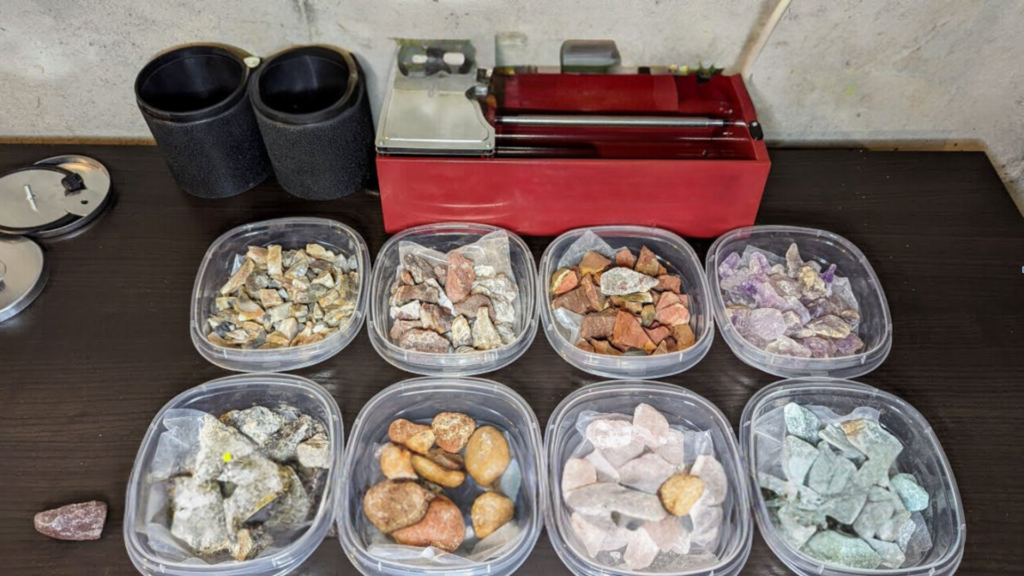Rock tumbling is an exciting and rewarding hobby that transforms rough rocks into beautiful, polished stones. If you’re new to rock tumbling, having the right equipment can make all the difference in your success and enjoyment. This guide will walk you through the essential equipment every beginner rock tumbler needs to get started.
1. Rock Tumbler
The centerpiece of your setup is the rock tumbler itself. There are two main types of rock tumblers:
| Rotary Tumblers | Vibratory Tumblers |
| 1. Rotary tumblers are more common. 2. Great for beginners. 3. Use a rotating barrel to grind and polish the rocks. 4. More Affordable 5. Easy to use. | 1. Work by vibrating rather than rotating. 2. Faster than rotary tumblers 3. Can be more expensive. 4. Ideal for polishing, 5. Not as effective for the initial grinding stages. |
2. Grit and Polish
Grit and polish are essential for the rock tumbling process. You’ll need different grades of grit for each stage:
- Coarse Grit: Used for the initial grinding to shape the rocks.
- Medium Grit: Smooths out the rocks after coarse grinding.
- Fine Grit: Prepares the rocks for polishing.
- Polish: Gives the rocks their final shine.
3. Rocks
Of course, you’ll need rocks to tumble! For beginners, start with easily tumbled rocks like quartz, agate, jasper, or even beach pebbles. Make sure the rocks are roughly the same hardness to ensure uniform results.
4. Plastic Pellets
Plastic pellets are used as filler material to cushion the rocks during the tumbling process, especially in the polishing stage. They help prevent chipping and ensure an even polish.
5. Tumbling Media
In addition to rocks and grit, you might need additional tumbling media like ceramic pellets. These are used to fill the tumbler barrel when you don’t have enough rocks. They help maintain the proper balance and improve the tumbling action.
6. Sieves and Screens
Sieves and screens are useful for separating the rocks from the grit and slurry between stages. Stainless steel or plastic sieves work well and are easy to clean.
7. Water
Water is a critical component in the tumbling process. It works with the grit to grind and polish the rocks. Make sure you have access to clean water to rinse the rocks and keep the slurry moving.
8. Cleaning Supplies
You’ll need brushes, sponges, and towels for cleaning the rocks and the tumbler barrel between each stage. Keeping your equipment clean ensures better results and prolongs the life of your tumbler.
9. Safety Gear
Safety is important. Always wear safety glasses to protect your eyes from flying grit or rock particles. Gloves can protect your hands when handling sharp or rough rocks.
Conclusion
With the right equipment, rock tumbling can be a fun and fulfilling hobby. Investing in quality tools and materials will help you achieve stunning results and enjoy the process. Happy tumbling!


